I got evacuated from the C.A.R. back in late March due to the political situation in the country, which to this day has not improved much. I took a long hiatus from posting on this blog as it felt like re-reading a book before I had even finished reading it. But I still have many stories to tell, so I will continue to post about my unexpectedly shortened experience in the jungles of the C.A.R. as well as other adventures I may embark on.
————-
Let me tell you about the time my Biggest Jungle Fear came true: when a tree fell on top of my house hut in mid-March. An astute observer pointed out that my fear did not in fact become realized as I am still alive with all my limbs un-squashed.
What?!—you might exclaim—you live in the middle of the jungle in the Central African Republic and your biggest fear is a tree falling over?! Yes. It is. I can always trust my trackers to avoid snakes (though admittedly I did almost step onto one on three or four different occasions), to prevent gorillas from getting pissed and to tell me when to run away from angry, charging elephants when necessary. But trees? Nope. You sleep in a measly wooden hut surrounded by massive trees that can fall in any direction at any given moment.
I awoke in the middle of the night to fierce winds howling and the entire forest’s leaves rattling. It sounded like an intense rainstorm but in fact it hadn’t started yet: in the jungle, the rustling of the leaves can be indistinguishable from the pitter-patter of raindrops. I decided to quickly answer my call of nature outside before Mother Nature unleashed all of her glory, but she decided to let the rain start before I was done anyway. Running back inside before I got completely soaked, I started to get a little big frightened. This was the strongest storm I had experienced yet and bits of twigs had started falling around us almost as fast as the rain was.
Suddenly, there was a loud whacking sound: a sizable branch fell on our house. With chaos brewing outside, it was difficult to tell where exactly it landed. I could see that the vet staying in the room next to mine was awake as her headlamp light shone through our connecting wall’s wooden slats. I called out to her: “Are you okay?” Before she could even respond, we heard the much louder ear-splitting crack of a tree unable to bear the added stress, followed by a few moments of terrified waiting. Then, the crash and tumble of an entire tree falling.
The vet and I sprung into action, grabbing our headlamps and stuffing our sleeping bags into dry bags so that we could run to the nearest structurally intact hut. In the flicker of the lightning I saw the massive tree in front of our house that was most definitely not there before. I allowed myself a second’s pause and a whispered ”Holy ****!” before we ran into the rain.
After jumping over several brand-new streams to reach the living room hut, we had no choice but to get ourselves as cozy as we could while we waited out the storm. We made ourselves some hot cocoa and watched in disbelief as a surreal scene unfolded in front of us: our camp caretaker was up washing dishes and a tracker was making coffee in a pot over the kitchen fire. Here we were at 4 am, having barely survived a falling tree, in the middle of a massive storm—and people were going on with their regular household chores! We found out later that the trackers had sprinted across the camp to see if we were ok after they heard the crash, but saw that we were up and about.
We got to see the damage after the rain stopped and the sun rose.

It looks like an entire tree, but we think it’s a large branch from the top of the tree of which the trunk you can see on the left of the house. As you can see, we’re very lucky it didn’t land on the house…

My room—where I stayed the entire duration of my stay—was the one on the far right in the above photo. The vet was staying in the room behind my hanging yoga mat. The area in front of the house is usually a swept clearing.

The room on the far left of the house sustained the most damage. It’s a little hard to tell, but you can see how the roof was a little caved in and how the awning snapped.
Back to work for the vet and I! I set out with my two trackers on the main road that leads north of the camp.

We found the road to be covered in broken branches and fallen trees.

We also found creatures that are normally buried deep within the tree trunks, such as these termite queens (that is my guess, at least). They were the length of a palm. If you look closely, you’ll see that they had little faces complete with eyes and hard, black fangs!

The trackers couldn’t resist nibbling on some of the sweat bee honeycombs. The hives are found in hollow trees and were conveniently exposed when its tree fell onto the road.

The next day, people were sent to assess the damage and to remove the loose pieces.

No one could resist seeing a large chainsaw be operated. The tree trunk was cut up into sections for easier removal. The fourth person from the left is an Eco Guard, the armed guards who protect the country’s national parks.
In conclusion, I’m really glad I didn’t get killed in my sleep by a falling tree.

 The signs that flank the community leaders on stage say “‘Fight to the end” and “Redress 6/4”.
The signs that flank the community leaders on stage say “‘Fight to the end” and “Redress 6/4”. 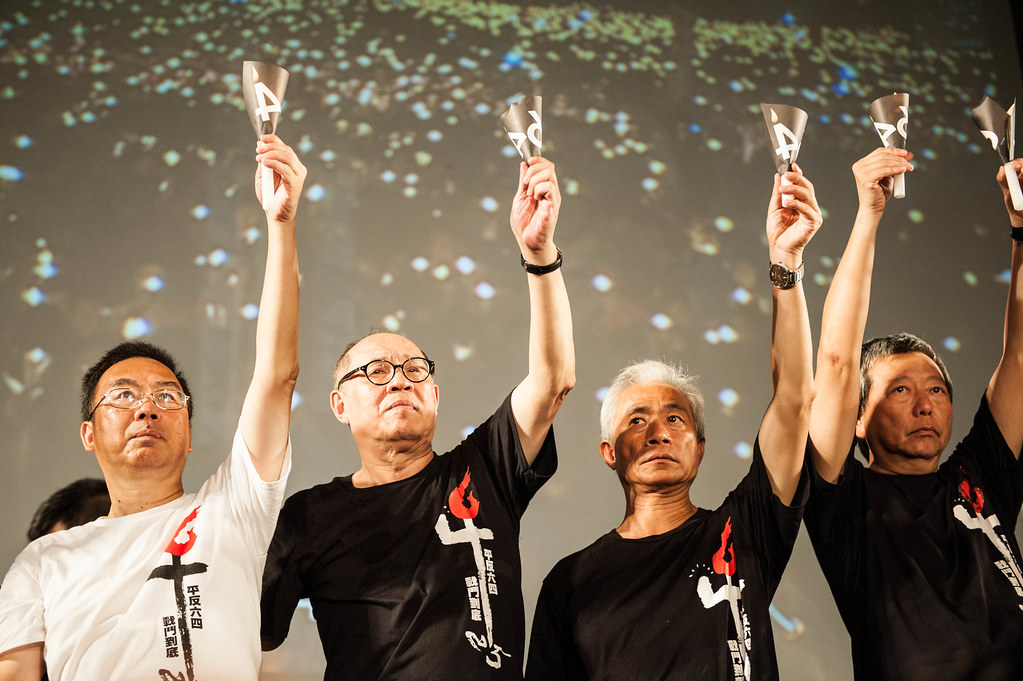 People raised their candles in memory of the victims.
People raised their candles in memory of the victims. People entering the park were greeted by pro-democracy activists seeking donations to support their efforts.
People entering the park were greeted by pro-democracy activists seeking donations to support their efforts. Activists held replicas of the Goddess of Democracy, a 10-meter-tall statue built by arts students to bolster morale when the Tiananmen protests seemed to falter.
Activists held replicas of the Goddess of Democracy, a 10-meter-tall statue built by arts students to bolster morale when the Tiananmen protests seemed to falter. 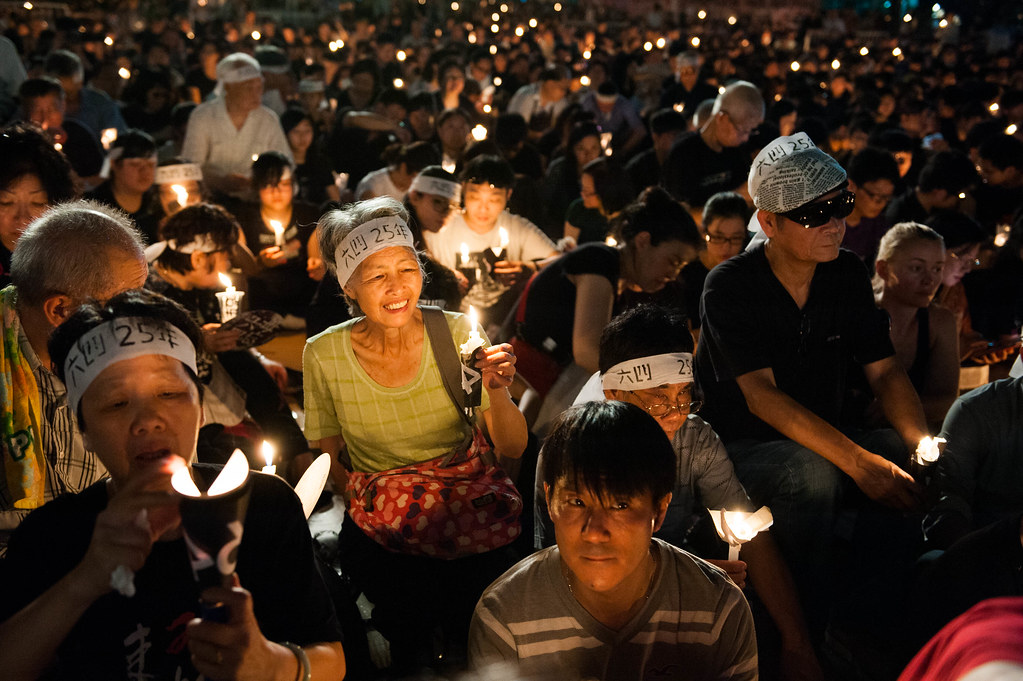 The mood was not always dark; some found joy in the show of solidarity.
The mood was not always dark; some found joy in the show of solidarity. A man with a small child holding a poster attracted the journalists’ attention.
A man with a small child holding a poster attracted the journalists’ attention.  People of all ages and occupations showed up.
People of all ages and occupations showed up.  A young girl sits in between her parents.
A young girl sits in between her parents. 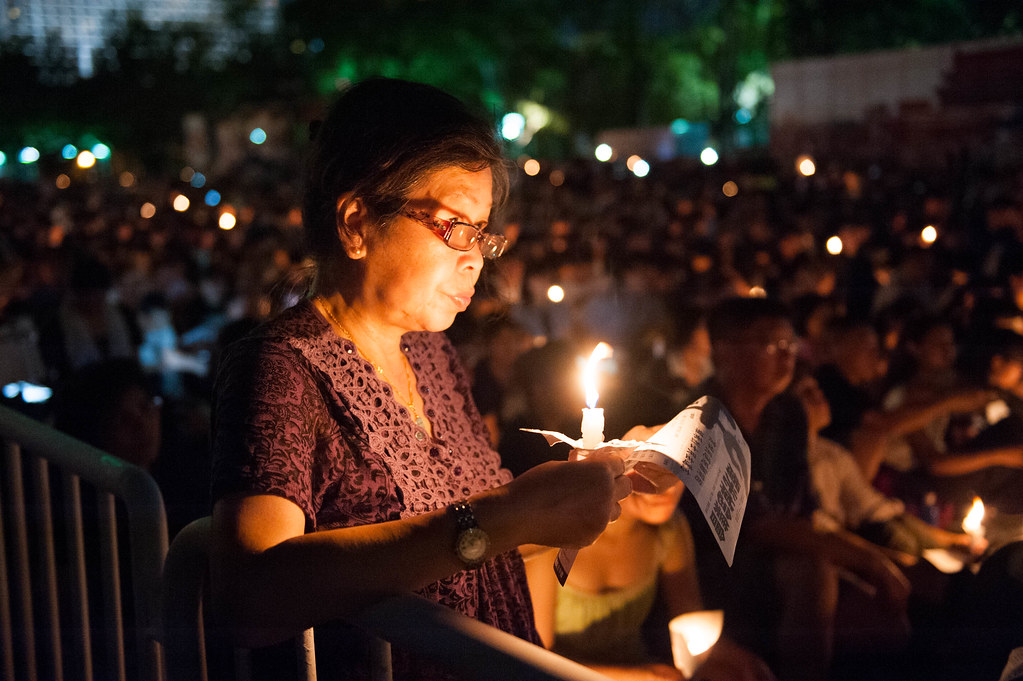 A woman reads one of the many pamphlets handed out that night.
A woman reads one of the many pamphlets handed out that night. 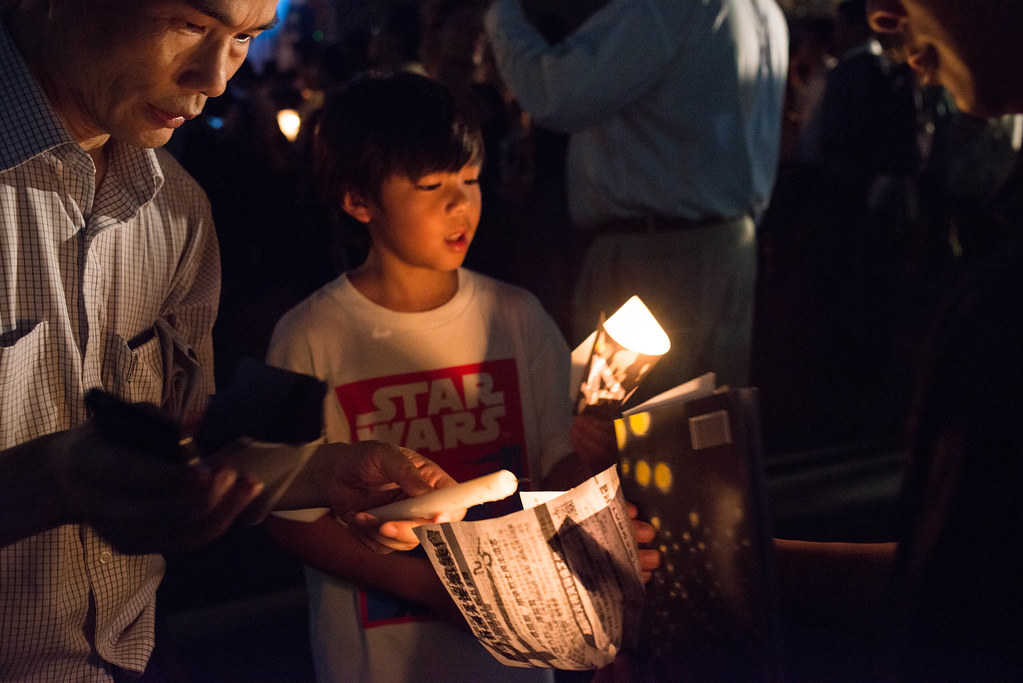 A young boy lights his candle.
A young boy lights his candle. 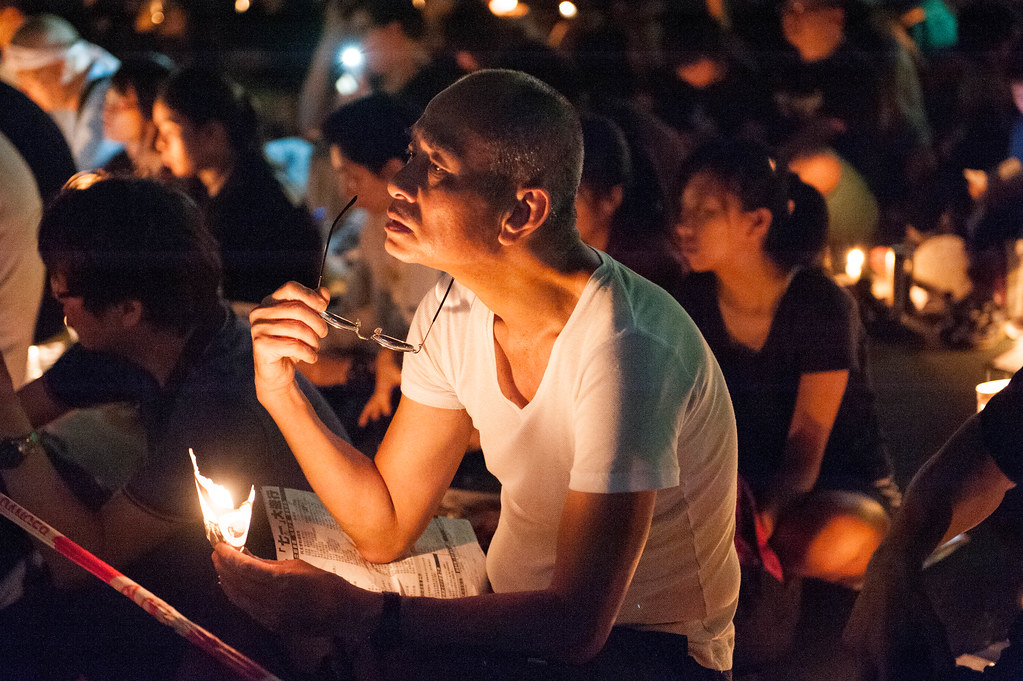 Many in the crowd were too young to remember the Tiananmen massacre as anything more than a historical event. Others however, remembered all too well.
Many in the crowd were too young to remember the Tiananmen massacre as anything more than a historical event. Others however, remembered all too well.
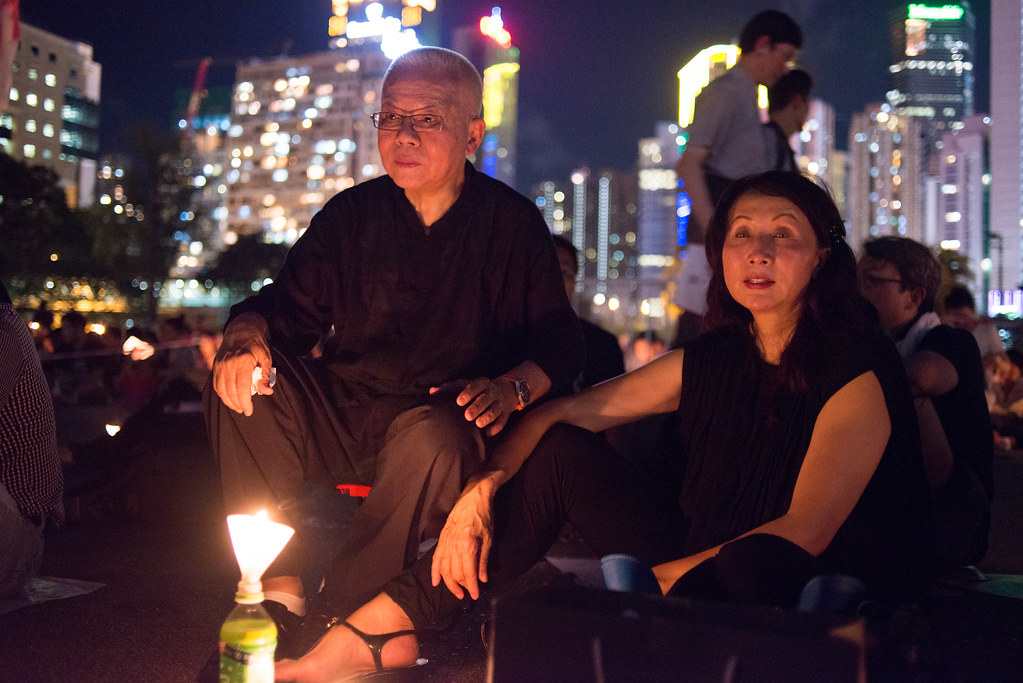

 A monument was erected in the center of the park.
A monument was erected in the center of the park. 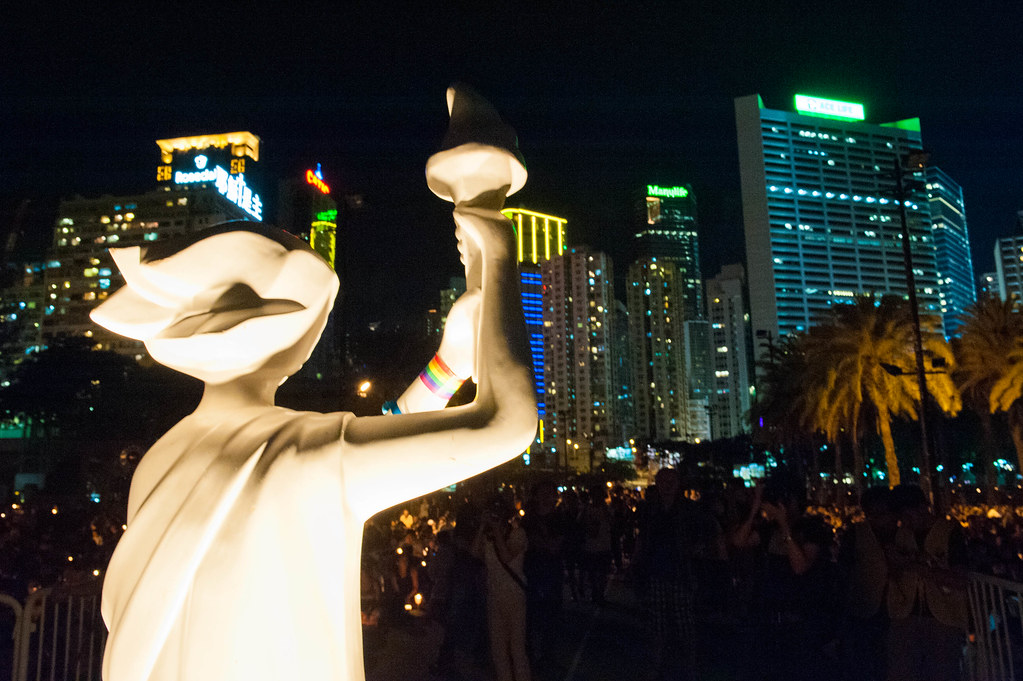 A replica of the Goddess of Democracy watched over the vigil.
A replica of the Goddess of Democracy watched over the vigil.  Lyrics were provided to those unfamiliar to the songs sung in unison by the crowds.
Lyrics were provided to those unfamiliar to the songs sung in unison by the crowds.
 Crowds streamed onto the MTR and onto buses to get home after the vigil ended at around 10pm.
Crowds streamed onto the MTR and onto buses to get home after the vigil ended at around 10pm. 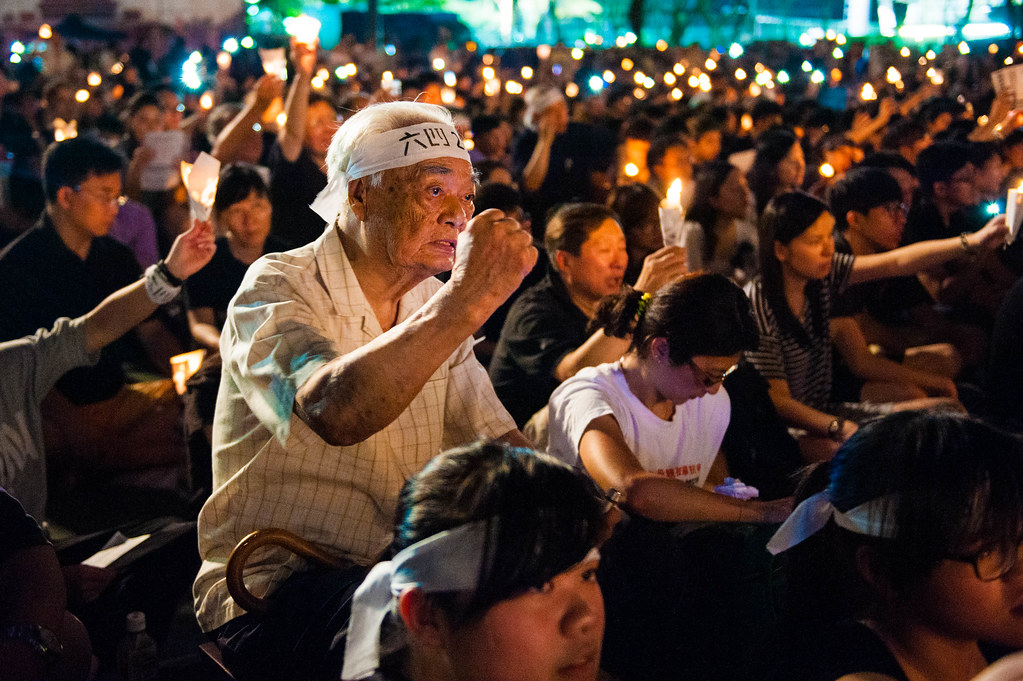 Never forget.
Never forget.












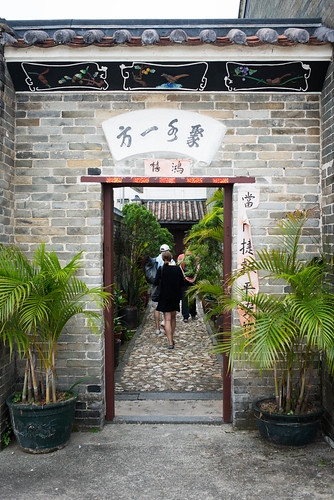
 The fact that this study hall is a declared monument and almost 200 years old doesn’t stop its next-door neighbor from cozying up to it.
The fact that this study hall is a declared monument and almost 200 years old doesn’t stop its next-door neighbor from cozying up to it.  An overgrown abandoned plot nearby.
An overgrown abandoned plot nearby.  Kids were playing basketball on a court right up against the historic buildings.
Kids were playing basketball on a court right up against the historic buildings.  The old and new coexist comfortably here…
The old and new coexist comfortably here…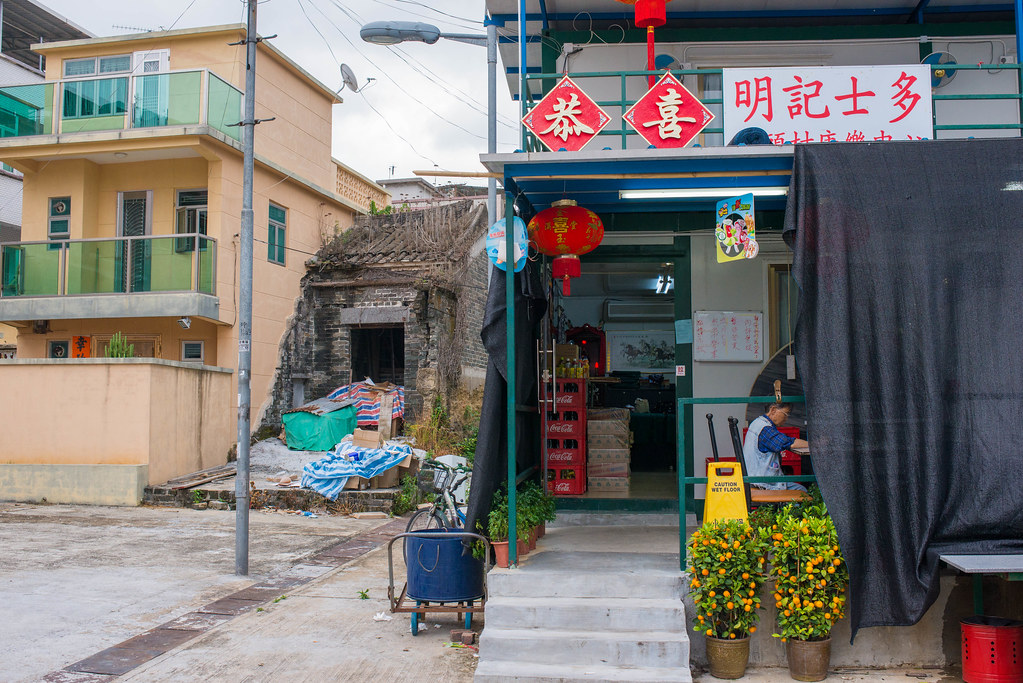 Like this sadly dilapidated and crumbling structure, side by side with a shiny new home.
Like this sadly dilapidated and crumbling structure, side by side with a shiny new home.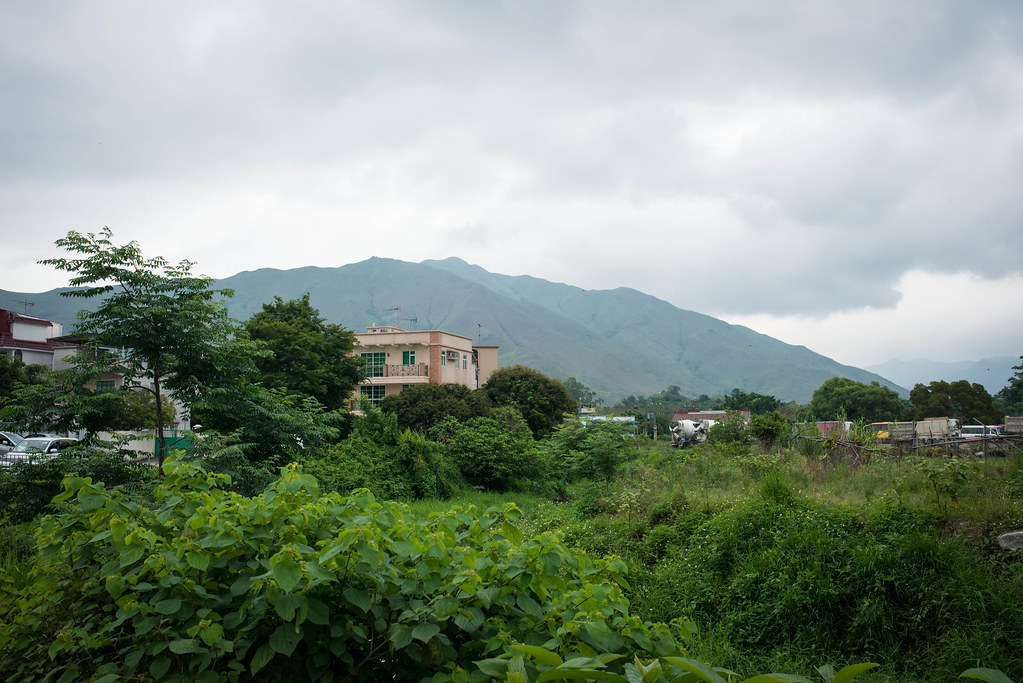 The village is set in a luxuriously verdant plain at the foot of hills that seem more fitting of Scotland than Hong Kong.
The village is set in a luxuriously verdant plain at the foot of hills that seem more fitting of Scotland than Hong Kong.  The odd architecture and neglected exterior of this small apartment block seemed more incongruous than the historic buildings. While the latter remain dignified and proudly preserved, these appeared to simply be left behind by the passing of time.
The odd architecture and neglected exterior of this small apartment block seemed more incongruous than the historic buildings. While the latter remain dignified and proudly preserved, these appeared to simply be left behind by the passing of time.  The local residents are of diverse nationalities.
The local residents are of diverse nationalities. 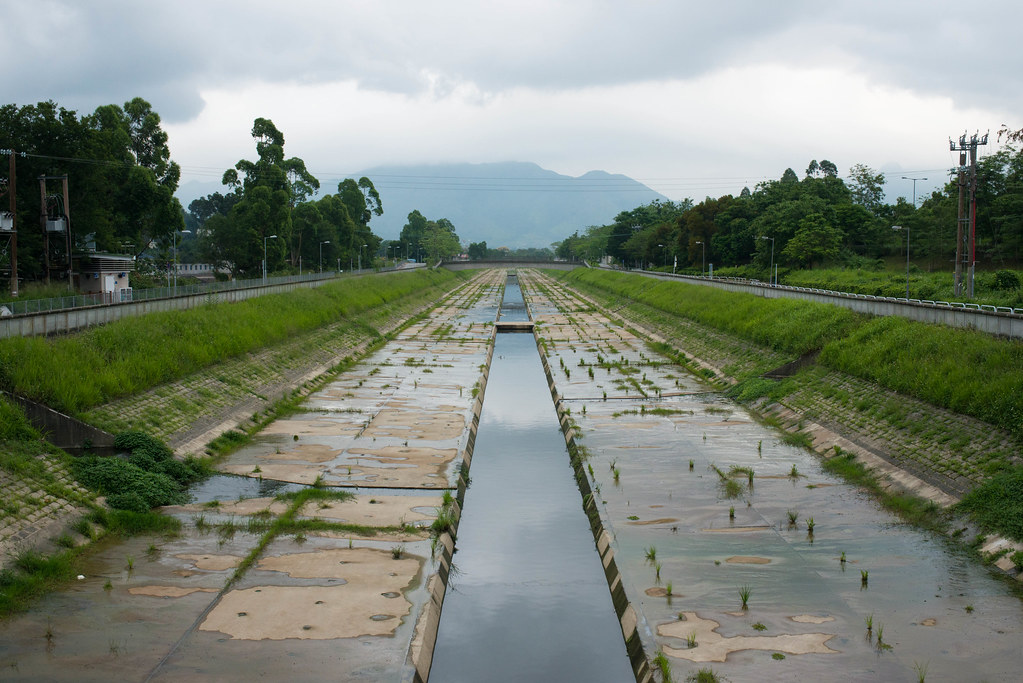 An offshoot of the Kam Tin river runs alongside the village.
An offshoot of the Kam Tin river runs alongside the village. 
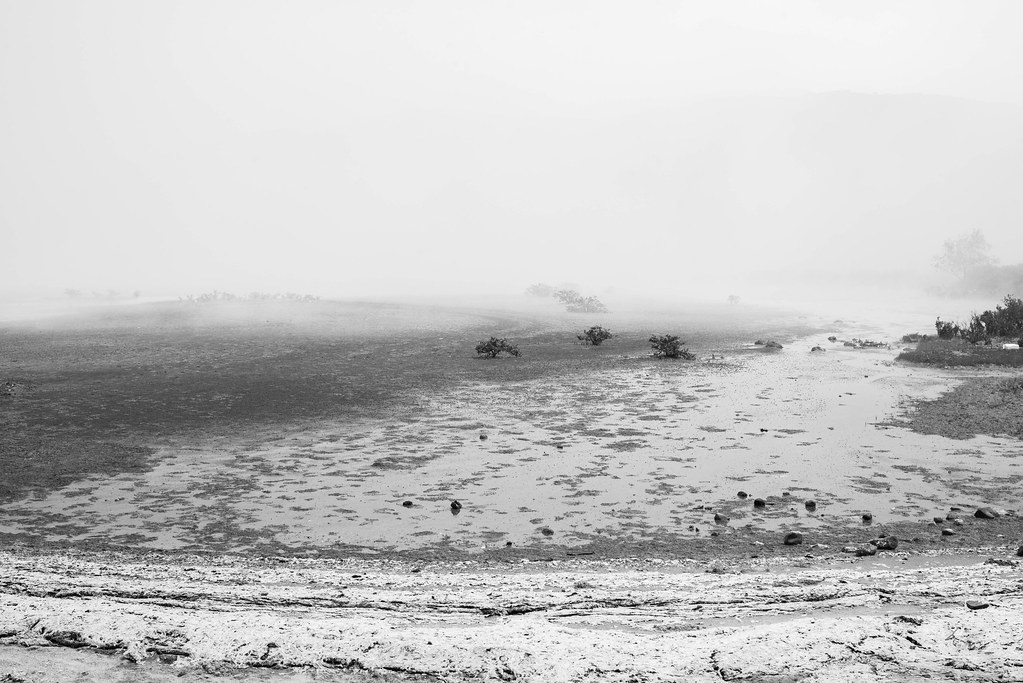

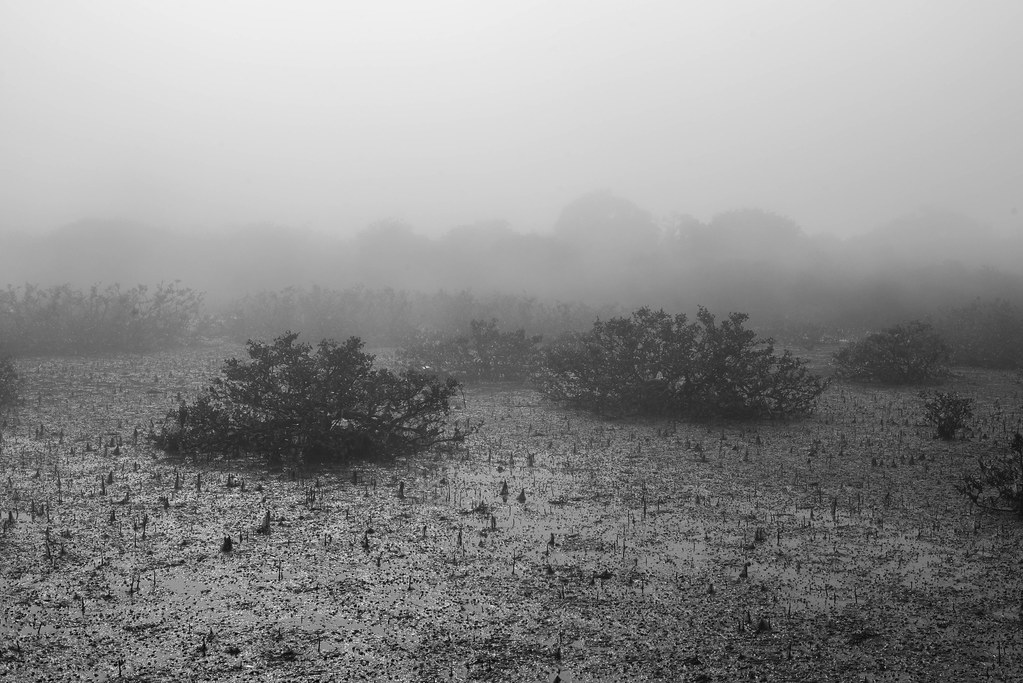

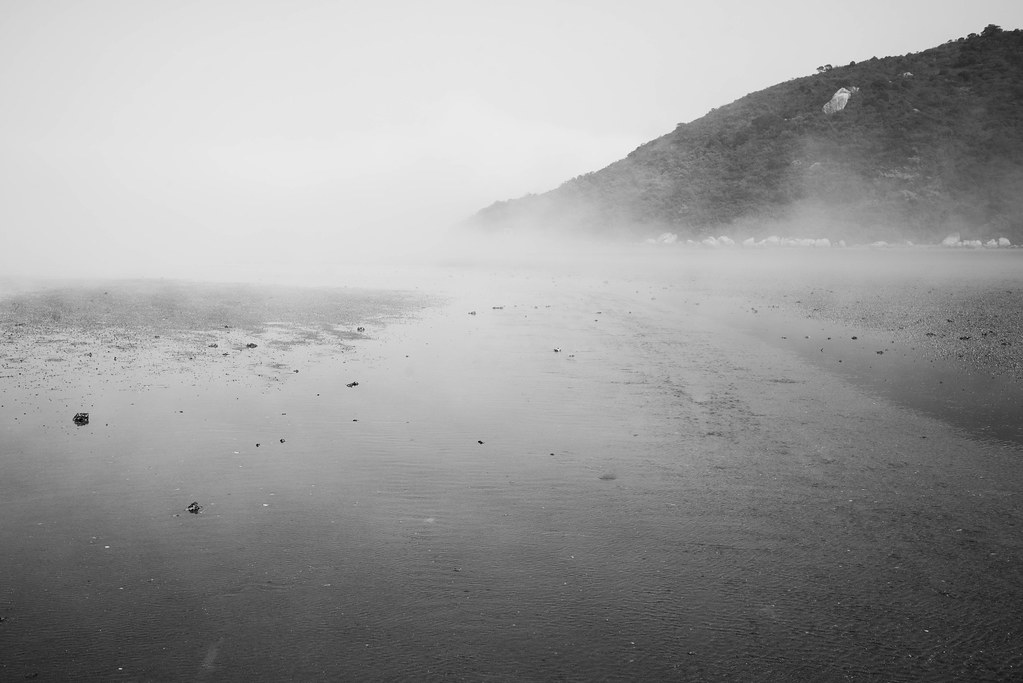

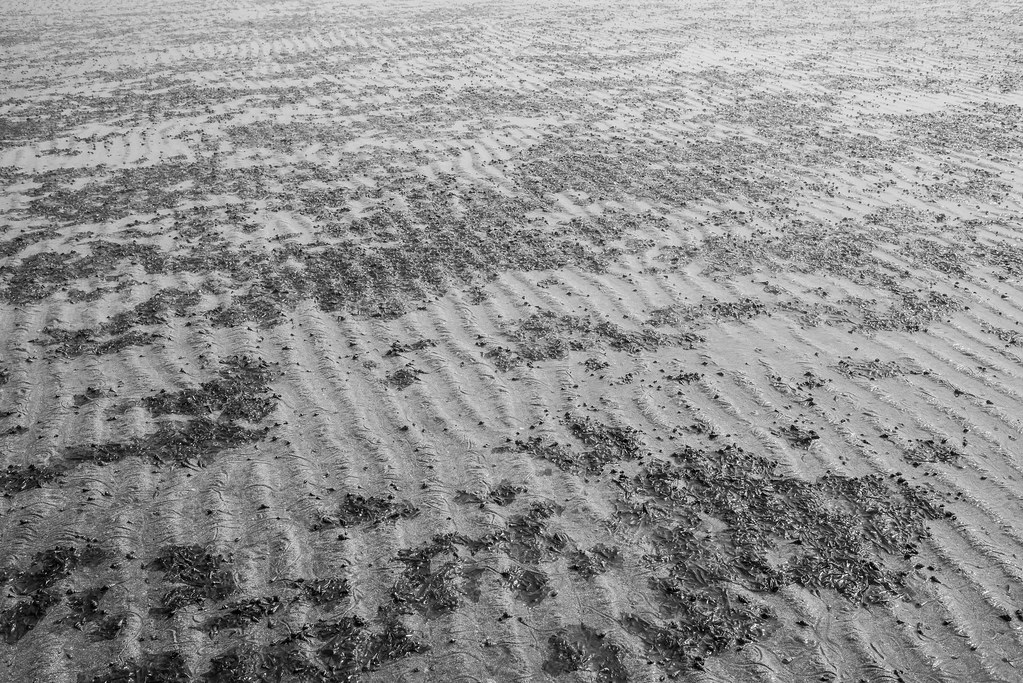
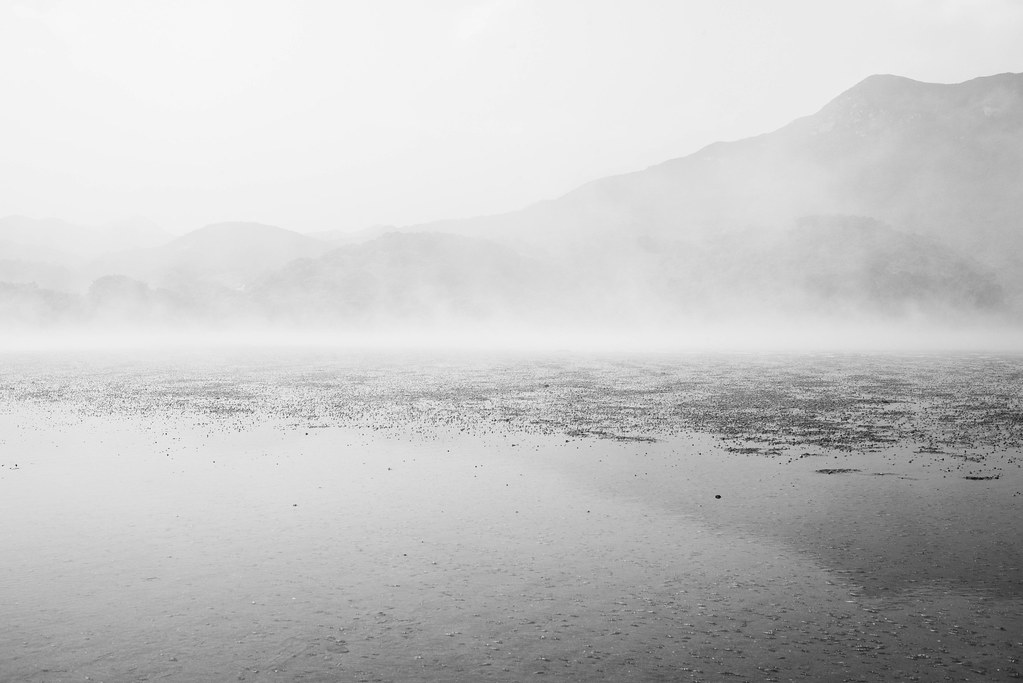
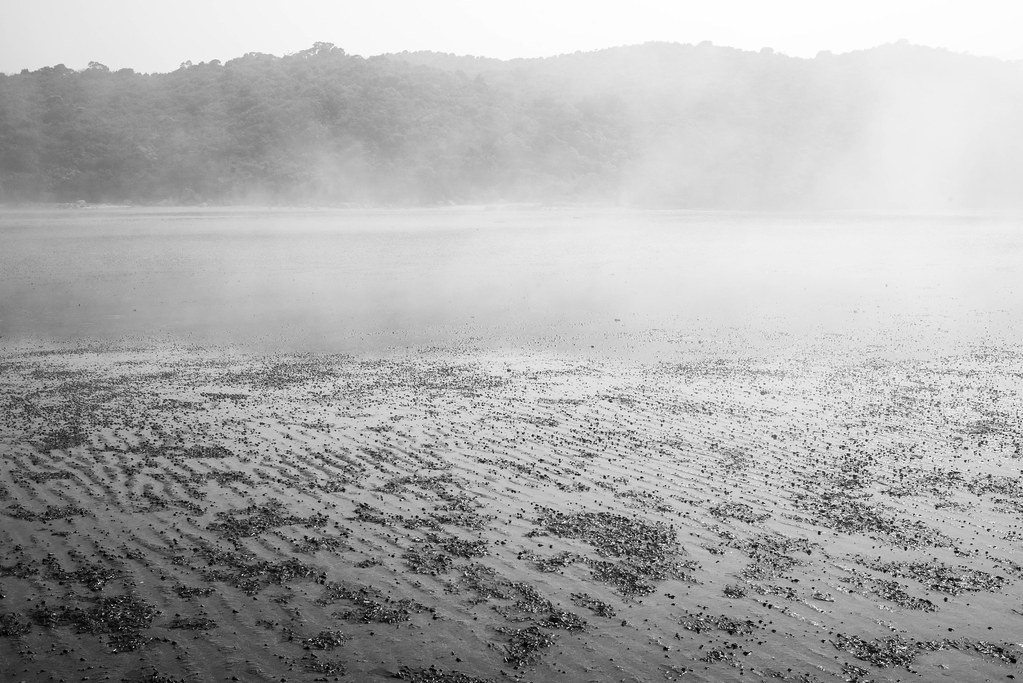

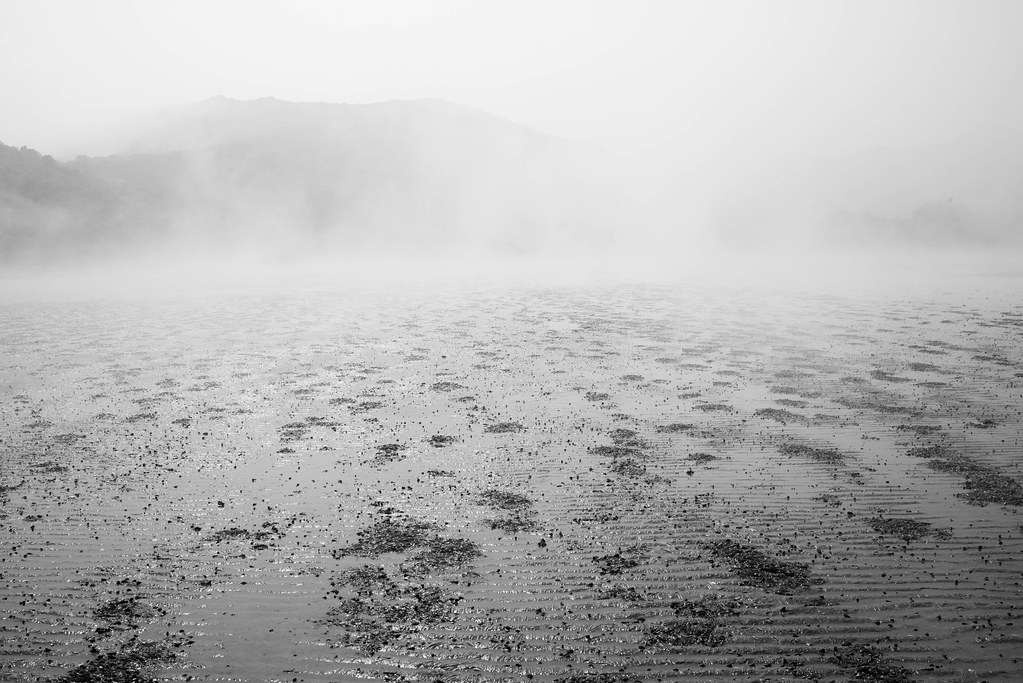

















 A baby more interested in his succulent fingers than the partying around him as he hangs off his mother’s back.
A baby more interested in his succulent fingers than the partying around him as he hangs off his mother’s back. 





 Three beautiful girls wearing the entire rainbow.
Three beautiful girls wearing the entire rainbow.




 Sometimes you just have to take that important business call even if it’s the day of the Dodowa Festival, you’re wearing a special outfit and you’re 12 years old.
Sometimes you just have to take that important business call even if it’s the day of the Dodowa Festival, you’re wearing a special outfit and you’re 12 years old. 
 A drummer wearing makeup to look like an old man. I have no idea why.
A drummer wearing makeup to look like an old man. I have no idea why.

 Another Dodowa dignitary.
Another Dodowa dignitary.

 Sometimes you just have to put the camera down. (Photo credit: Isabelle J.)
Sometimes you just have to put the camera down. (Photo credit: Isabelle J.)
 Schoolboys peering over the walls, perhaps to watch the fishermen.
Schoolboys peering over the walls, perhaps to watch the fishermen.  People hanging over the castle walls to talk to fellow fishermen in their pirogues.
People hanging over the castle walls to talk to fellow fishermen in their pirogues.  Fishermen socializing while they sit and repair their nets at the foot of the castle.
Fishermen socializing while they sit and repair their nets at the foot of the castle. 
 A fisherman sneaking a nap against the walls of the castle.
A fisherman sneaking a nap against the walls of the castle.  The white castle stands in sharp contrast against the homes built next to it.
The white castle stands in sharp contrast against the homes built next to it. While her parents are busy working, this young girl takes care of an even younger girl.
While her parents are busy working, this young girl takes care of an even younger girl. Fishermen hauling in their catch on Bojo Beach, which is on the way to Cape Coast.
Fishermen hauling in their catch on Bojo Beach, which is on the way to Cape Coast.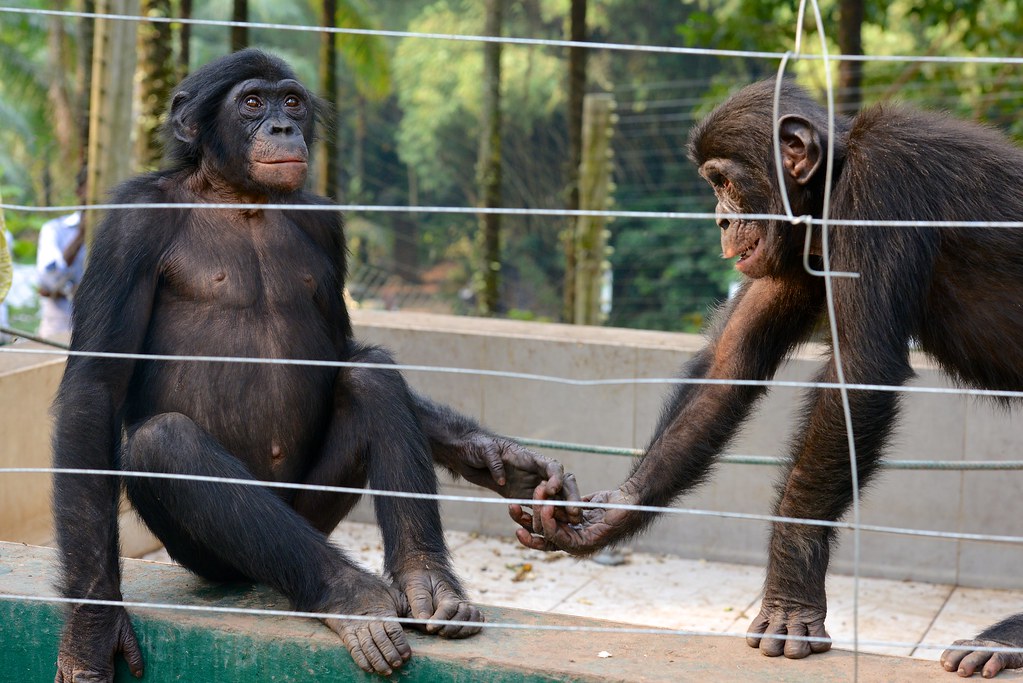
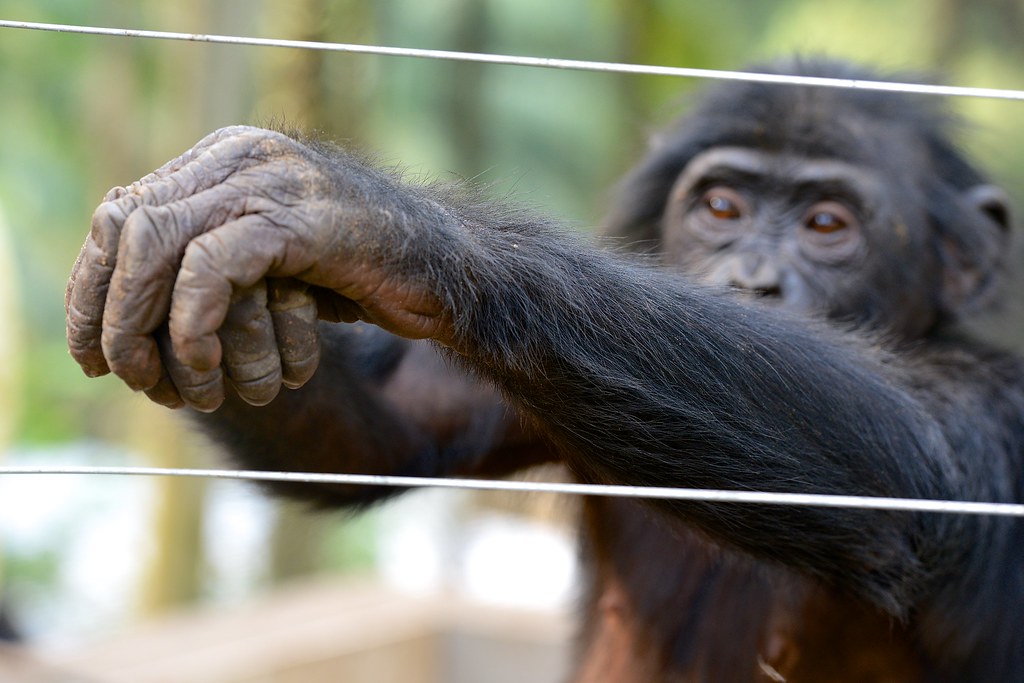


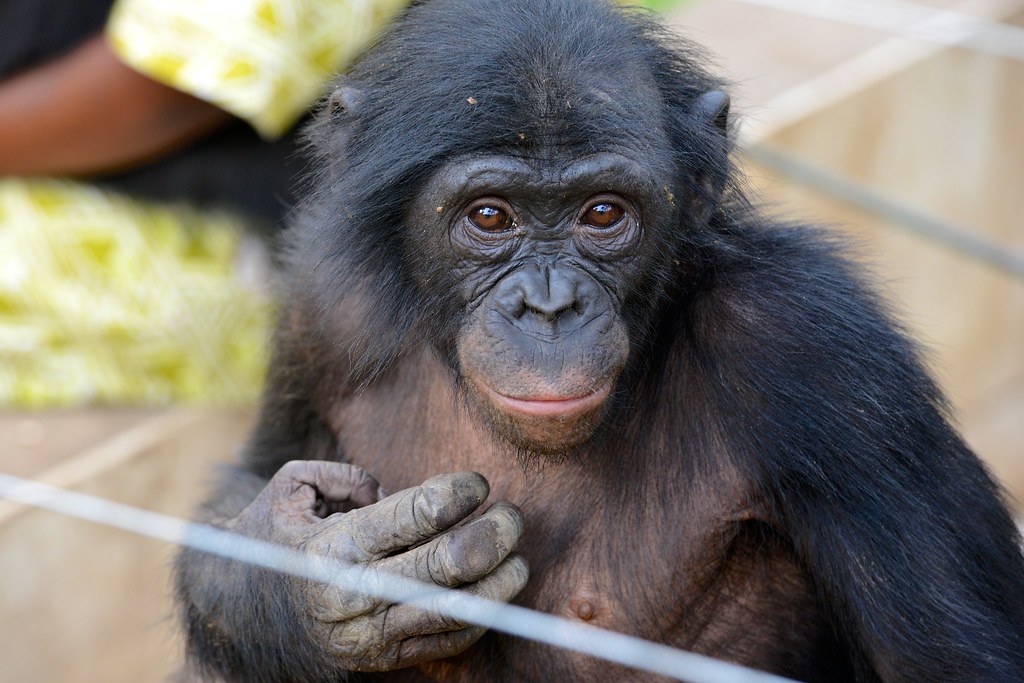

 Some bonobos, having been rescued from living as pets in possibly abusive homes, exhibit strange behavior. I’m not sure whether this behavior is normal, but the bonobo here liked pouring dirt over himself.
Some bonobos, having been rescued from living as pets in possibly abusive homes, exhibit strange behavior. I’m not sure whether this behavior is normal, but the bonobo here liked pouring dirt over himself. 
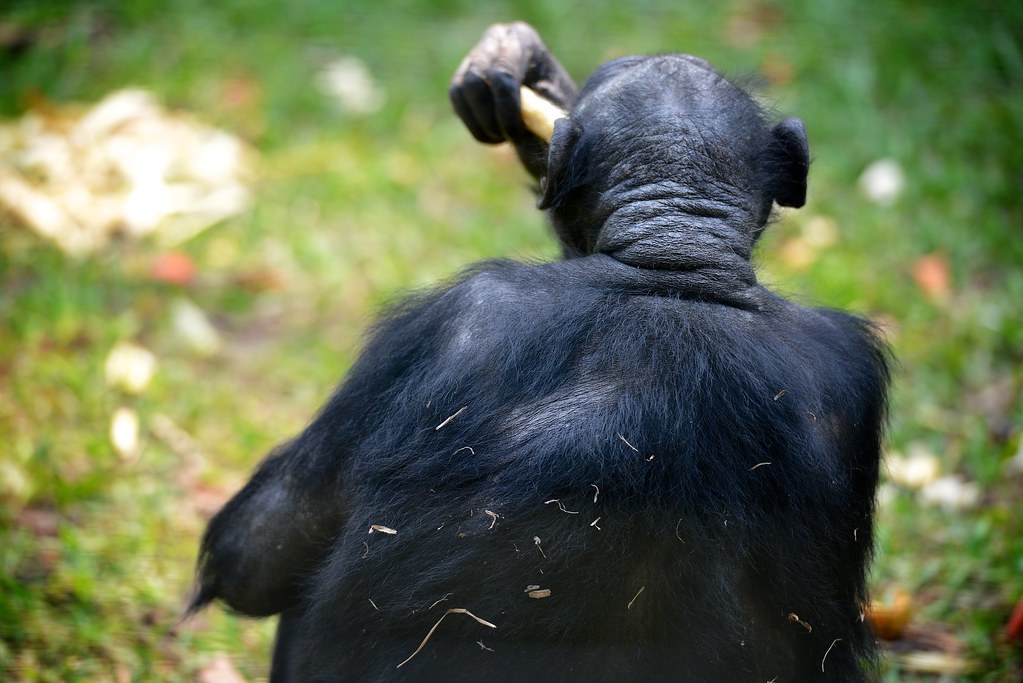

 Bonobos can sometimes come off as a little silly.
Bonobos can sometimes come off as a little silly.  Female-female sex
Female-female sex Female-male genital rubbing
Female-male genital rubbing  Young bonobo simulating sexual behavior with an adult
Young bonobo simulating sexual behavior with an adult  An infant bonobo playing with an adult.
An infant bonobo playing with an adult. 
 The Bounce film crew threw a ball over the fence to see how the bonobos would react to it.
The Bounce film crew threw a ball over the fence to see how the bonobos would react to it.







